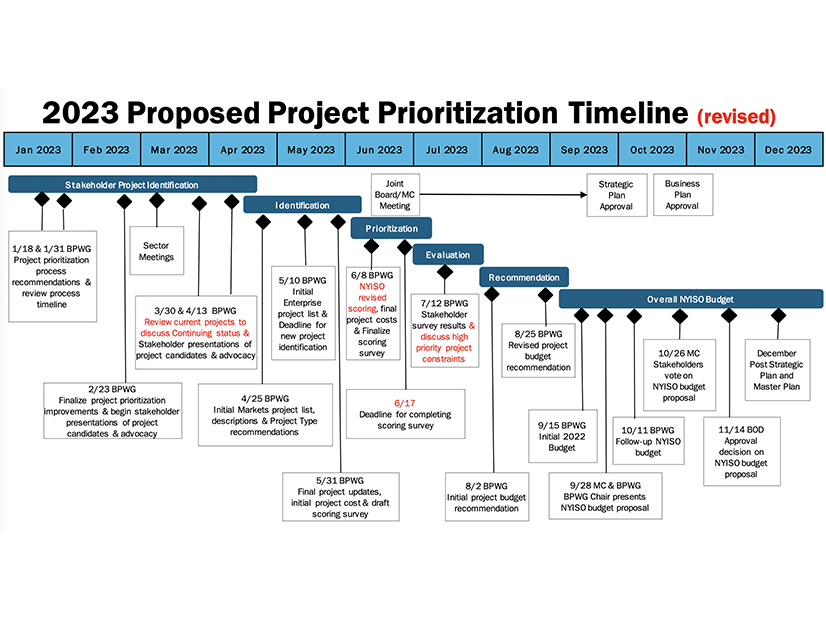NYISO on Tuesday recommended ways to incorporate stakeholder feedback into its annual prioritization of internal projects and initiatives that will kick off next month, particularly those simplifying scoring methods and sharing priorities as soon as possible.
The feedback focused overall on project scoring and ways to make it better, Michael DeSocio, director of market design, told the Budget and Priorities Working Group (BPWG).
“We don’t have a specific a recommendation here today, but we agree with some of the feedback and think it’s probably the right time to revisit how the ISO scores are developed,” DeSocio said.
Stakeholders requested that NYISO identify project dependencies earlier in the process — whether doing one project would forego the opportunity to do others — and those that are urgent earlier, DeSocio said.
They also want the ability to have more discussions on priorities: not just project priorities, but also emerging or broader issues, he said.
There were also questions and concerns about modifications to the scope and milestones of a project after scoring is completed, and some suggested changes to how the ISO handles the “continuing” category, which contains items that remain on its to-do list from the previous year. Stakeholders commented that there need to be clear criteria for taking a project off the continuing list, such as dramatic increases in estimated costs or missing key milestones.
Project Dependencies
NYISO was mostly receptive to stakeholders’ suggestions. It recommended that it share project priorities earlier in the process as part of a revised and simplified scoring method and that it present urgent projects at the BPWG for discussion.
However, though it said it considered whether and how it can identify interchangeable project resource constraints, it said doing so would “undermine the purpose of the prioritization process and is not readily administrable.”
“Possibly dozens of combinations of projects can or cannot be done based on resources, costs and interest,” NYISO said. “NYISO believes that by sharing its project priorities earlier in the process, stakeholders will be better informed on conflicts earlier to allow for discussion about options both before and after project scoring.”
It’s often unclear how much an initiative or set of new market rules will cost until it fully understands the technical requirements for implementing them, DeSocio said, citing the development of rules for distributed energy resources.
“We moved ahead and developed some really good DER rules,” DeSocio said. “We started to put that out either to bid or to work with our platform vendor that helps us keep the software running for the energy market, and those costs came back and were very large.”
The ISO could just say the project is “continuing” and prioritize other projects around those costs, he said, but staff thought that it would be important to be able to share these updated costs with stakeholders before marking an effort as “continuing,” he said.
“We cannot absorb all of these costs in one year. Maybe we need to rethink how we roll this out and do so over the course of a couple of years so that we don’t impact the budget as much,” DeSocio said.



